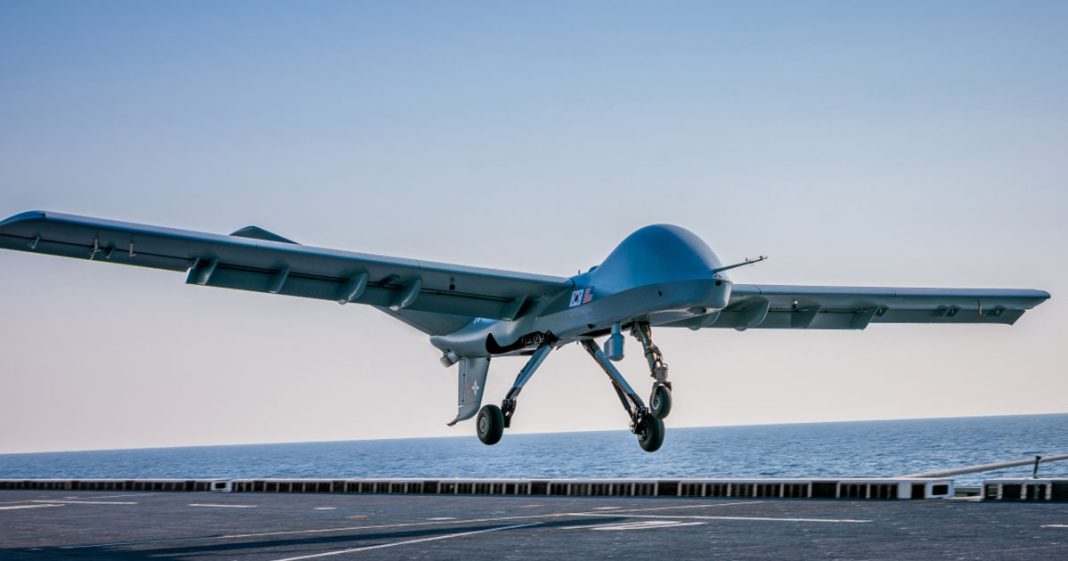In a groundbreaking development for naval operations, a General Atomics Gray Eagle short takeoff and landing (STOL) drone has successfully launched from the South Korean amphibious assault ship, Dokdo, at sea and subsequently landed at a ground base. This achievement marks a significant advancement in the operational capabilities of South Korea’s Navy and paves the way for future drone carrier missions.
The drone’s flight culminated in a routine landing at the Pohang Navy Airfield, demonstrating the Dokdo warship’s readiness for advanced drone carrier operations. Linden Blue, CEO of General Atomics Aeronautical Systems, emphasized the importance of this demonstration, stating, “This demonstration illustrates the ability of the [Gray Eagle] STOL to safely operate on many types of aircraft-capable ships, which opens myriad new ways our allies can use this UAS to support multi-domain naval operations.”
The Gray Eagle drone is designed with multifaceted roles in mind, including reconnaissance, surveillance, target acquisition, and attack missions. As a medium-altitude, long-endurance unmanned aerial vehicle (UAV), it boasts the capability to launch from various large-deck warships, specifically amphibious assault ships and aircraft carriers. The drone features an impressive endurance of 25 hours, a top speed of 167 knots (equivalent to 192 miles or 310 kilometers per hour), and an operational ceiling of 29,000 feet (about 8,840 meters). Additionally, the Gray Eagle can carry a payload of up to 1,075 pounds (488 kilograms), accommodating various advanced equipment such as electro-optical/infrared sensors with laser designation, synthetic aperture radar, communications relay systems, and the capacity to deploy up to four Hellfire missiles.
In light of increasing security challenges in the region, the successful trial of the Gray Eagle supports South Korea’s broader military strategy aimed at enhancing readiness and expediting the integration of UAVs into naval operations. This initiative aligns with Seoul’s long-term goal of developing a mixed manned-unmanned maritime combat system, centered on the advancements in artificial intelligence-driven unmanned systems.
Admiral Yang Yong-mo, South Korea’s Chief of Naval Operations, highlighted the significance of the demonstration, stating, “The demo highlighted the versatility of STOL aboard a warship, in the Dokdo, designed not for fixed-wing aircraft but solely for helicopters.” He further remarked that the successful flight of the Gray Eagle STOL underscores the potential for navies to enhance their operational capabilities without necessitating extensive and costly modifications to their existing warships.
With this landmark achievement, South Korea is positioning itself as a leader in the integration of advanced drone technology into military maritime operations, setting the stage for enhanced naval capabilities in an increasingly complex security environment.





